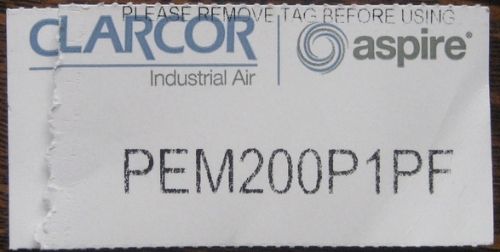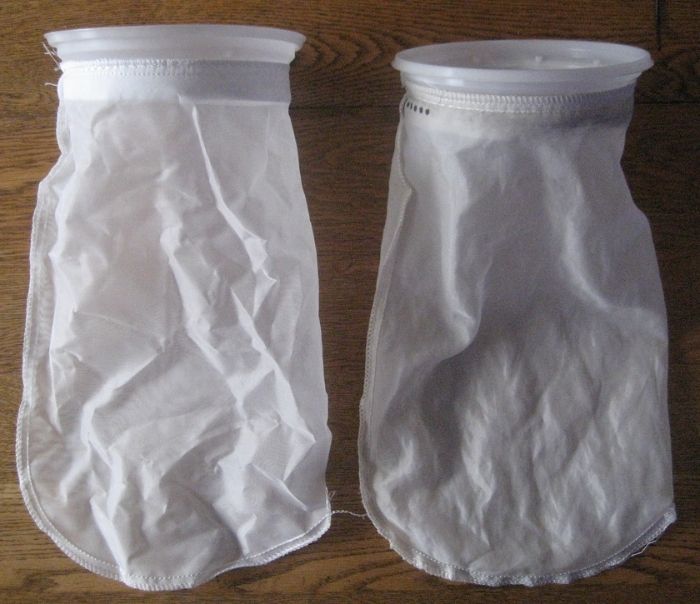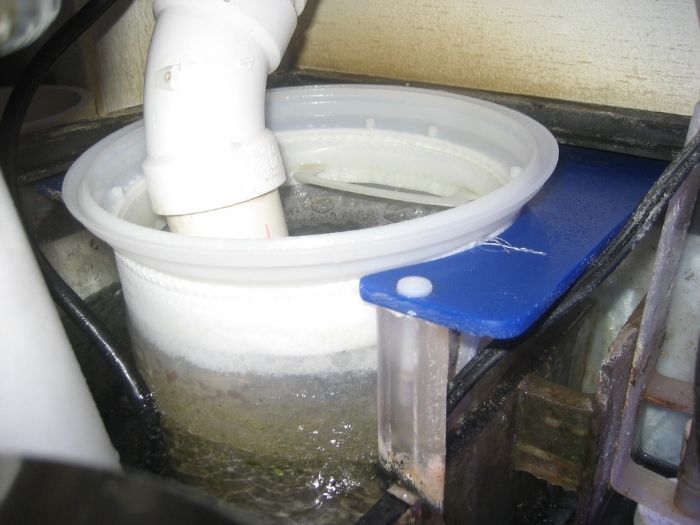I just learned something interesting about mesh filter socks that I'd like to share.
Before I do that, I want to briefly review socks to educate those who aren't aware of the differences available in filter socks. (For those smarty pants reefers, you may wish to jump to "Conclusion.")
WHAT ARE THEY MADE OF
Filter socks are available in two different materials.....Felt and Mesh.
Felt socks are thick (ca 1/8 inch) and made of a nonwoven material. They are very efficient is cleaning your water, but because of their thickness, more difficult to clean. You can't see through them. Typically people clean these in their washing machines with a little bleach.
Mesh are a screen material that comes in various hole sizes. Common hole sizes are 100-200 microns. Under a microscope, these look just like a window screen, but much smaller little squares. Because they are a single layer of fiber, they are translucent and clean fairly easily. Typically people clean these by rubbing fabric to fabric while holding under a running faucet. (Some also clean these in washing machines with a little bleach).
WHAT SIZES DO THEY COME IN
Filter socks are available as the fabric alone (mesh or felt), typically with a draw string, or with a hard plastic ring. The common sizes for the plastic ring versions are 4 inch and 7 inch diameter rings. These rings typically fit into some sort of holder to allow DT water to drain through the sock.
MY EXPERIENCES
I first stared with both mesh and felt socks....both with seven inch rings. The only effective way to clean felt socks is in a washing machine. I have a top loading aggitating washing machine that ended up breaking up the plastic rings on my socks.

Since I could not use my washing machine to clean my socks.... felt was out!
With my mesh socks, the way I cleaned these was to run them under the faucet while rubbing fabric to fabric, and then hanging them to dry. This was very effective in getting them fairly clean. About once a year I'd soak them in a little bleach to make them squeaky clean white.
My socks are old....somewhere between 3 - 6 years old....or maybe older. I originally had about a dozen, but now down to six socks. What I've recently noticed (the past six months to a year or so) was that a sock that use to last 4 - 5 days, I was now only getting 1 1/2 to 2 days out of before it was overflowing. By the way, I use 200 micron socks.
I wasn't sure what was causing this, but my guess was bacterial bloom blocking up the mesh, precipitation on the sock, or are just clogged up with something the bleach wasn't cleaning. A recent thread was cause for me to order up a couple new socks to figure out what was going on. What I first noticed with the new socks was that they were more transparent than the older socks I have. Again, both are 200 micron socks. The best way to show this is to show you two pictures of a window in my house with the first taken through the old sock, and the second through the new sock.
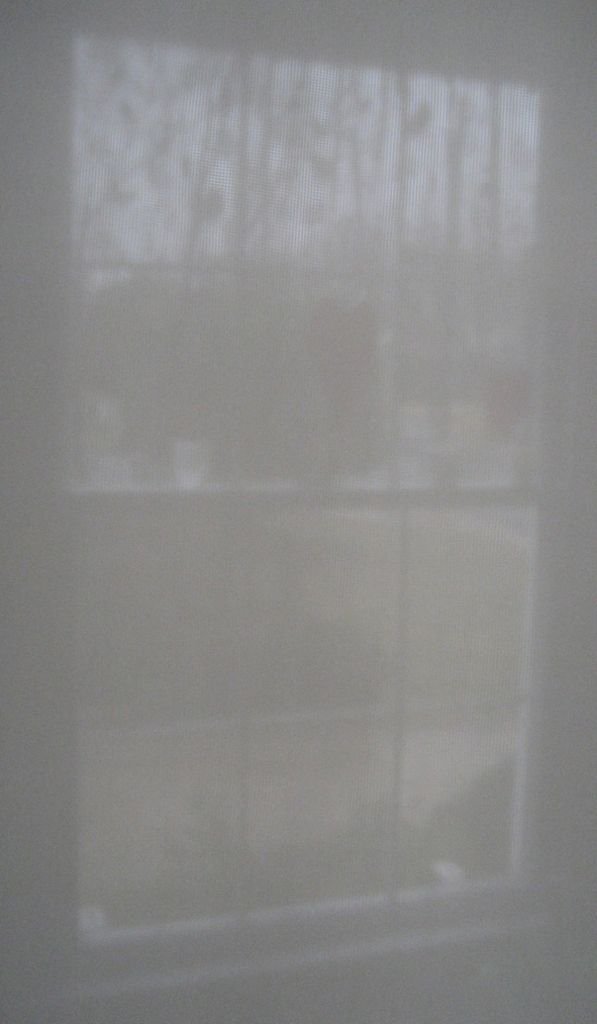
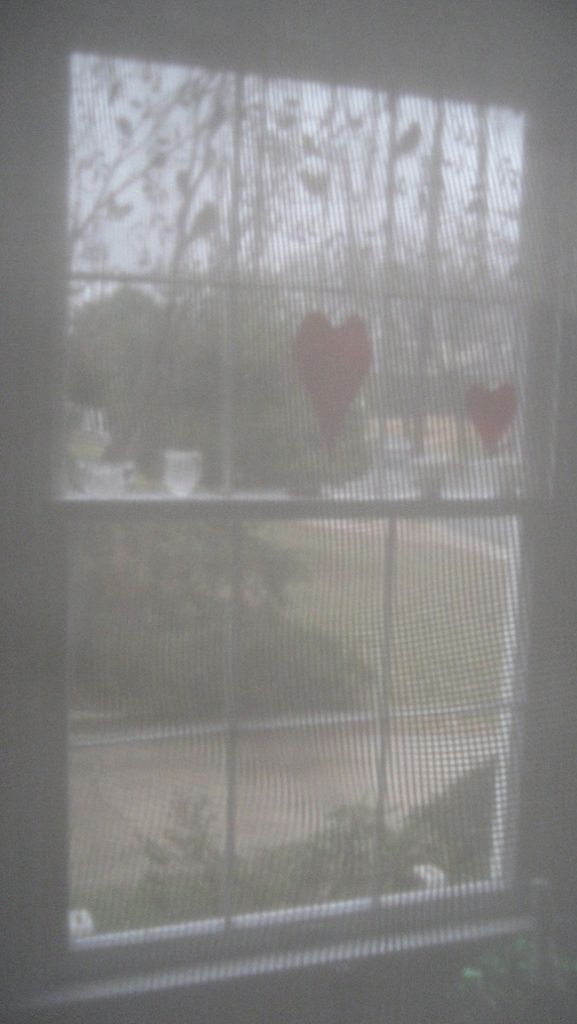
To further investigate the above differences, I pulled out the jeweler's loupe and looked at the two socks. What I found was that the old socks appeared to have smaller holes. Also noted was the threading was thicker with the old socks. What I'm now surmising is that my washing routine caused the fabric to flatten/fray (and now thicken), reducing the size of the holes. The new sock has been in my tank now for over three days with no evidence of water rising.
CONCLUSION
In conclusion, I am now convinced that my washing routine of mesh socks by rubbing fabric to fabric caused the fibers of the mesh to widen, and thereby reducing the size of the holes to filter the water. What was once a 200 micron filter sock, that lasted 4 - 5 days, was now much smaller, causing it to overflow within 1 1/2 days or so.
My interest in running a filter sock was to eliminate snails from entering my skimmer. I will now be ordering 300 micron socks with the hope that my washing routine, fattening the fiber, will still allow me to get four or five days out of each sock.
Before I do that, I want to briefly review socks to educate those who aren't aware of the differences available in filter socks. (For those smarty pants reefers, you may wish to jump to "Conclusion.")
WHAT ARE THEY MADE OF
Filter socks are available in two different materials.....Felt and Mesh.
Felt socks are thick (ca 1/8 inch) and made of a nonwoven material. They are very efficient is cleaning your water, but because of their thickness, more difficult to clean. You can't see through them. Typically people clean these in their washing machines with a little bleach.
Mesh are a screen material that comes in various hole sizes. Common hole sizes are 100-200 microns. Under a microscope, these look just like a window screen, but much smaller little squares. Because they are a single layer of fiber, they are translucent and clean fairly easily. Typically people clean these by rubbing fabric to fabric while holding under a running faucet. (Some also clean these in washing machines with a little bleach).
WHAT SIZES DO THEY COME IN
Filter socks are available as the fabric alone (mesh or felt), typically with a draw string, or with a hard plastic ring. The common sizes for the plastic ring versions are 4 inch and 7 inch diameter rings. These rings typically fit into some sort of holder to allow DT water to drain through the sock.
MY EXPERIENCES
I first stared with both mesh and felt socks....both with seven inch rings. The only effective way to clean felt socks is in a washing machine. I have a top loading aggitating washing machine that ended up breaking up the plastic rings on my socks.

Since I could not use my washing machine to clean my socks.... felt was out!
With my mesh socks, the way I cleaned these was to run them under the faucet while rubbing fabric to fabric, and then hanging them to dry. This was very effective in getting them fairly clean. About once a year I'd soak them in a little bleach to make them squeaky clean white.
My socks are old....somewhere between 3 - 6 years old....or maybe older. I originally had about a dozen, but now down to six socks. What I've recently noticed (the past six months to a year or so) was that a sock that use to last 4 - 5 days, I was now only getting 1 1/2 to 2 days out of before it was overflowing. By the way, I use 200 micron socks.
I wasn't sure what was causing this, but my guess was bacterial bloom blocking up the mesh, precipitation on the sock, or are just clogged up with something the bleach wasn't cleaning. A recent thread was cause for me to order up a couple new socks to figure out what was going on. What I first noticed with the new socks was that they were more transparent than the older socks I have. Again, both are 200 micron socks. The best way to show this is to show you two pictures of a window in my house with the first taken through the old sock, and the second through the new sock.


To further investigate the above differences, I pulled out the jeweler's loupe and looked at the two socks. What I found was that the old socks appeared to have smaller holes. Also noted was the threading was thicker with the old socks. What I'm now surmising is that my washing routine caused the fabric to flatten/fray (and now thicken), reducing the size of the holes. The new sock has been in my tank now for over three days with no evidence of water rising.
CONCLUSION
In conclusion, I am now convinced that my washing routine of mesh socks by rubbing fabric to fabric caused the fibers of the mesh to widen, and thereby reducing the size of the holes to filter the water. What was once a 200 micron filter sock, that lasted 4 - 5 days, was now much smaller, causing it to overflow within 1 1/2 days or so.
My interest in running a filter sock was to eliminate snails from entering my skimmer. I will now be ordering 300 micron socks with the hope that my washing routine, fattening the fiber, will still allow me to get four or five days out of each sock.


